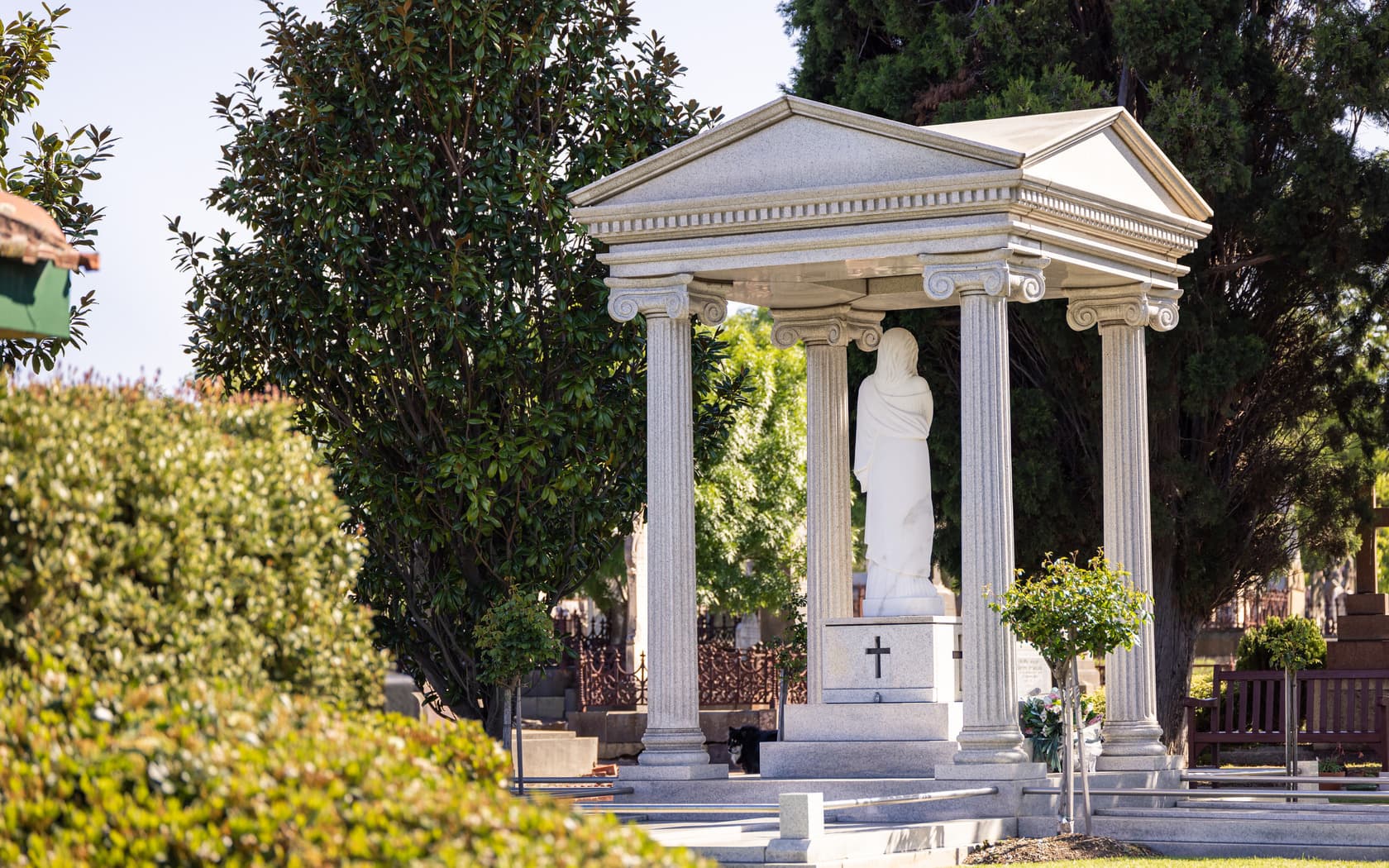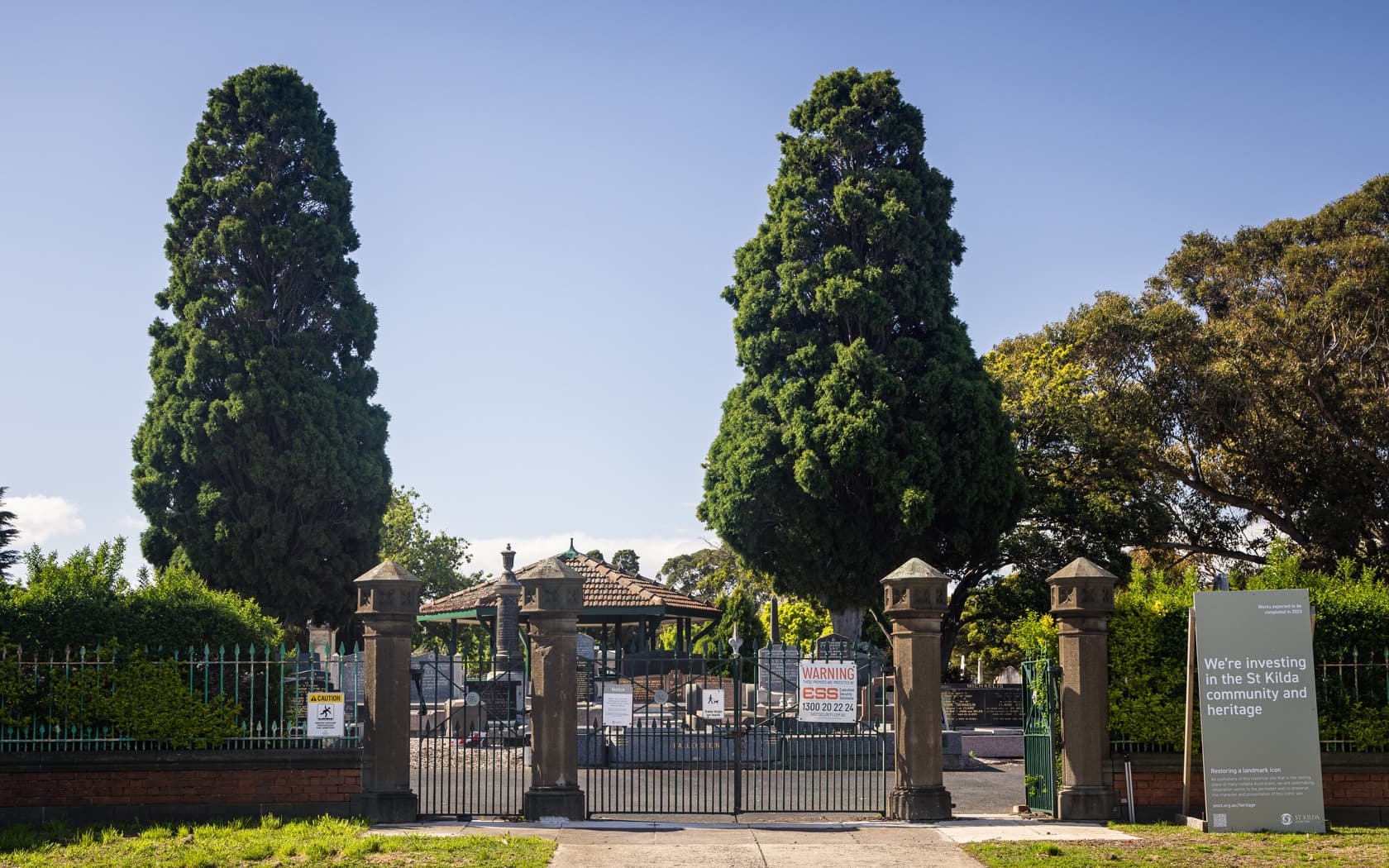St Kilda Cemetery
St Kilda Cemetery, established in 1855, spans 18 acres and features tranquil, landscaped gardens. Known for notable interments, it offers a peaceful sanctuary for reflection in an iconic suburb.
- St Kilda Cemetery
- 1300 466 904
- Site open daily 8am to 6pm (8pm during daylight savings)

Welcome to St Kilda Cemetery
St Kilda Cemetery offers a range of dignified and tranquil memorial options for families seeking a lasting tribute. Whether you prefer a traditional burial or a cremation memorial, our grounds provide beautifully landscaped settings designed for reflection and remembrance.
Project Cultivate, horticultural works aimed at enhancing the natural landscapes of our historical cemetery sites, have commenced. The first phases will remove weeds and introduce a layer of mulch to improve soil conditions for planting. This project builds on our commitment to sustainability and community wellbeing.
Fees and pricing
Fees and pricingView our fees list for more information on pricing and packaging options at St Kilda Cemetery.
Memorial options at St Kilda Cemetery
Choices include graves for traditional burials and cremation memorials like garden seats, shared trees, rose gardens, and shrub positions.
Photo gallery









Location
Need support with planning?
If you need support, we’re here to help.
